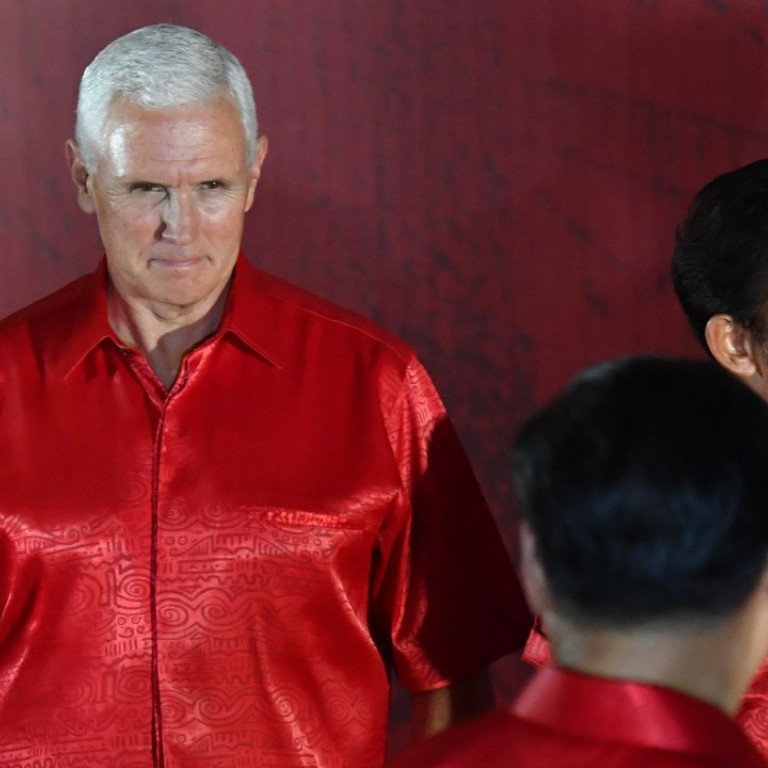
No resolution, no problem: Apec united in desire for more trade and growth
- Disagreements over WTO reform saw this month’s Apec summit end without a joint statement
- But most economies making up the bloc agree commerce remains vital, despite the US-China trade war dominating proceedings
Alan Bollard, the outgoing executive director of the 21-member intergovernmental forum, on Tuesday said leaders had shared candid views during the meeting in Papua New Guinea and agreed on almost everything in a draft declaration.
“Where we had some differences, it was around some adjectives on how we characterised trade,” Bollard said at a seminar in Singapore. “What they agreed on was the continued importance of trade – there’s no difference in that. Everybody wants trade to continue and to grow, and we want more trade-driven growth.”
In a statement on Tuesday, Bollard said Apec members also achieved “full consensus” on measures including “important work to further advance women’s participation in the economy [and] leveraging digital technology to bridge the development gap”.
“All of this will help improve the lives of the people in the region and will continue to serve as the basis for Apec’s work in the coming years,” the statement said. “During the retreat, some leaders said that it is healthier not to paper over the divergent views member economies hold on trade. Such discussion falls within the spirit of the forum.”
‘Simply not true’: China rejects claims Apec diplomats tried to ‘barge’ in on PNG minister’s office to influence communique
The statement said most member economies reaffirmed Apec’s core objectives in promoting free and open trade and investment, although a small number had “alternative or additional views”.
Speaking to media after the summit, O’Neill said the main disagreement was that one country – believed to be the US, although the chairman did not specify which – insisted that the communique reflect the need for reform at the World Trade Organisation.
US President Donald Trump had previously threatened to pull out of the organisation, contending that its rules unfairly favour China.

“Apec has got no charter over World Trade Organisation,” O’Neill said. “That is a fact. That matter can be raised at the World Trade Organisation.”
Hellmut Lagos, host economy representative for Apec Chile 2019, who also spoke at the Singapore seminar, said: “For the public, it seems like a failure. But it must be said that most of the economies agreed, and it was only a few economies that disagreed.”
Still, he said there are lessons to be learned from this year’s summit. Lagos noted that when summit leaders are able to come to a consensus, there is typically a special sense of legitimacy that comes with the joint statement. But “when there are significant differences, it makes it very difficult to reach that agreement”.
“We have to be prepared for this scenario and see if we can find a procedural way out, and a way to acknowledge there are some important differences,” he said.
Can America’s answer to China’s massive belt and road really make an impact at Apec?
The seminar was aimed at bringing policymakers and experts together to discuss the challenges faced by the chairmanship of Apec this year, while providing a look into the upcoming Apec chairmanship by Chile in 2019.
All eyes will be now on the annual G20 summit in Argentina from November 30 to December 1, specifically the highly anticipated meeting between Trump and Xi.
While some market watchers are hopeful that the two world leaders would agree to a “ceasefire” – with the increase in tariffs from 10 per cent to 25 per cent, scheduled for January 1, to be put on hold – others believe that tensions could come to a head.
This year’s Apec summit was the latest in a growing number of multinational meetings worldwide where leaders have failed to issue their usual joint communiques.
In 2012, Southeast Asian nations had failed to reach an agreement at the Asean Foreign Ministers Meeting in Phnom Penh, Cambodia, in relation to territorial disputes in the South China Sea.
More recently, in 2016, a prepared joint statement by Asean was retracted at a meeting between Asean foreign ministers and China in the Chinese city of Kunming – also over the same matter.

